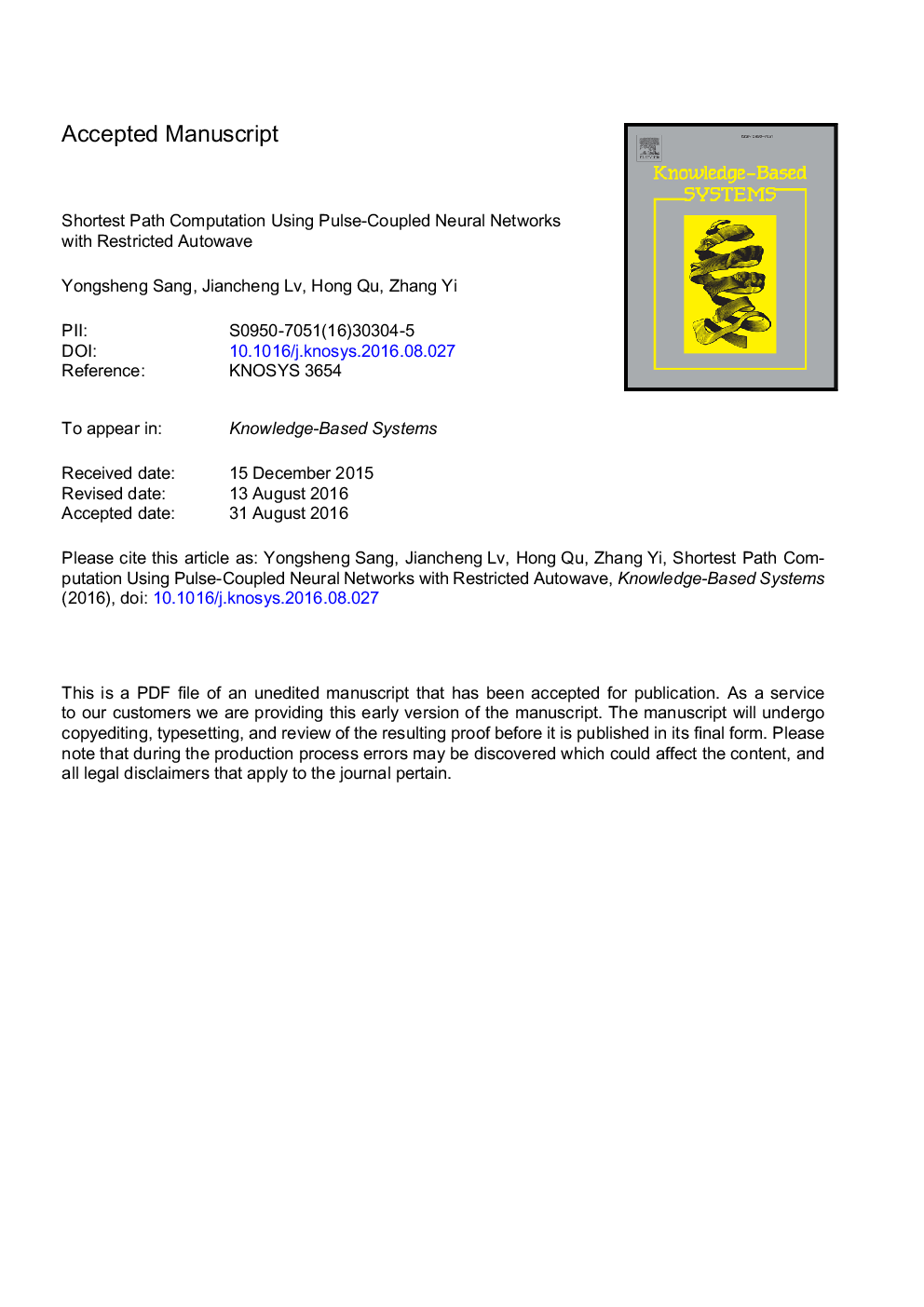| Article ID | Journal | Published Year | Pages | File Type |
|---|---|---|---|---|
| 4946438 | Knowledge-Based Systems | 2016 | 37 Pages |
Abstract
Finding shortest paths is an important problem in transportation and communication networks. This paper develops a Pulse-Coupled Neural Network (PCNN) model to efficiently compute a single-pair shortest path. Unlike most of the existing PCNN models, the proposed model is endowed with a special mechanism, called on-forward/off-backward; if a neuron fires, its neighboring neurons in a certain forward region will be excited, whereas the neurons in a backward region will be inhibited. As a result, the model can produce a restricted autowave that propagates at different speeds corresponding to different directions, which is different from the completely nondeterministic PCNN models. Compared with some traditional methods, the proposed PCNN model significantly reduces the computational cost of searching for the shortest path. Experimental results further confirmed the efficiency and effectiveness of the proposed model.
Related Topics
Physical Sciences and Engineering
Computer Science
Artificial Intelligence
Authors
Yongsheng Sang, Jiancheng Lv, Hong Qu, Zhang Yi,
